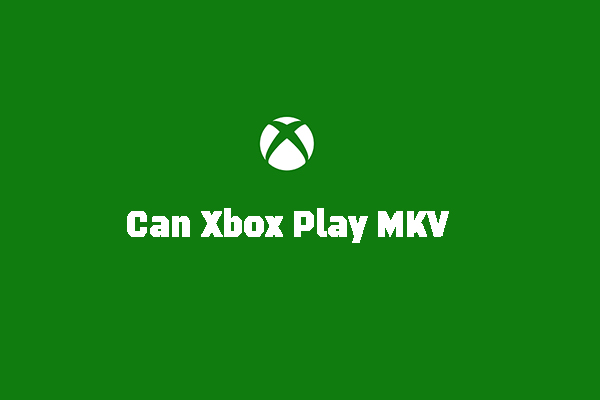When I try to play an iMovie export project in QuickTime Player, it tells me the document cannot be opened and the file isn’t compatible with QuickTime Player. Why isn’t my iMovie compatible with QuickTime Player? In this free video converter post from MiniTool, you will learn workable solutions to fix the iMovie not compatible with QuickTime error.
iMovie, made by Apple, is a free video editing application for the iPhone, iPad, and Mac. It allows you to export files in MP4 and MOV formats. QuickTime Player is the default multimedia player for Mac. Generally, you can play iMovie export files in QuickTime Player smoothly. But for some reason, you may encounter the problem of “iMovie not compatible with QuickTime”.
This problem can be caused by corrupted iMovie preferences, temporary files in iMovie, corrupted iMovie export files, unsupported formats, or other factors. Those factors can make iMovie export not compatible with QuickTime. To help you solve the problem, the following content has rounded up 4 feasible solutions. Let’s check them one by one.
Fix 1. Delete the iMovie Preferences
First, it is recommended to delete all iMovie preferences. Once the preferences are corrupted, they would prevent iMovie from encoding and exporting the video properly. Then it can make QuickTime Player fail to open or play iMovie export MP4 or MOV files. Below is how to delete the iMovie preferences:
1. Open iMovie and then hold down the Option and Command keys.
2. Then a window will appear to ask you if you want to delete the preferences. Choose the Delete Preferences option.
After you delete the corrupted iMovie preferences, you need to enter all preferences again.
Fix 2. Check If There Are Any Temporary Files
A temporary file indicates that your movie is still in the process of rendering and can’t be opened. The temporary file will exist when a file is downloaded. If you click on it, you can find that the file size is 0KB. Once the downloading process is over, the temporary file will disappear. Hence, if you accidentally play the temporary file in QuickTime Player, you will fail to open it. Therefore, you need to patiently wait for the iMovie processing.
Fix 3. Restore the Corrupted iMovie Export Files
Your iMovie export files can be damaged during the transmission or downloading process. QuickTime Player can’t open or play the corrupted iMovie export files. To resolve it, you can try to render and export the video again in iMovie. The professional video repair tool is also worth a try.
Fix 4. Convert the Incompatible iMovie File to QuickTime-Supported Format
To solve the iMovie file not compatible with QuickTime error, the most effective way is converting the unsupported file to formats supported by QuickTime Player. What formats are supported by QuickTime Player? This part will give you the answer. Additionally, we will recommend useful file converters.
QuickTime Player Supported Formats
- Video Container Formats: QuickTime Movie (.mov), MPEG-4 (.mp4, .m4v), MPEG-2, MPEG-1, 3GPP, 3GPP2, AVI, DV.
- Video Codecs: MPEG-2 (Part 2), H.264, H.263, H.261, Apple ProRes, Apple Pixlet, Animation, Cinepak, Component Video, DV, DVC Pro, Graphics, Motion JPEG, Photo JPEG, Sorenson Video 2, Sorenson Video 3.
- Audio Formats: iTunes Audio (.m4a, .m4b, .m4p), MP3, Core Audio (.caf), AIFF, AU, SD2, WAV, SND, AMR.
Why iMovie MP4 is not compatible with QuickTime? Though MP4 is supported by QuickTime Player, the MP4 video formatted by H.265 is not included. Only MP4 videos formatted by H.264 can be played in QuickTime Player. Compared with MP4, MOV is the best format for QuickTime Player. Hence, you’d better convert incompatible iMovie files to MOV.
How to Convert iMovie Export Files to QuickTime Video Formats
A useful file converter can help you complete the file conversion task easily and effectively. HandBrake and VLC media player are good choices. Both of them are free and open-source applications. HandBrake enables you to convert videos to MP4, MKV, and WebM formats. More importantly, it allows you to change the video codec to H.264. VLC also can help you do that.
If you are a Windows user and want to convert MP4 to MOV or convert videos for QuickTime, MiniTool Video Converter is highly recommended. It supports a wide range of formats and provides customizable parameters. You can use it to change the codecs of both audio and video, frame rate, sample rate, and others. Furthermore, it also has a screen recording feature like QuickTime Player.
MiniTool Video ConverterClick to Download100%Clean & Safe
Wrapping Up
This post has introduced 4 workable solutions to fix the iMovie not compatible with QuickTime error. Hopefully, this post will be helpful to you.



![How to Play MKV on Apple TV with or Without Converting [3 Ways]](https://images.minitool.com/videoconvert.minitool.com/images/uploads/2024/10/play-mkv-on-apple-tv-thumbnail.jpg)
User Comments :